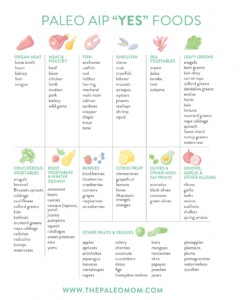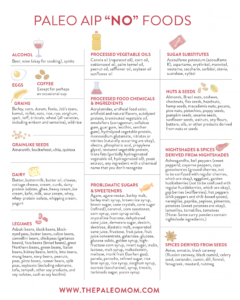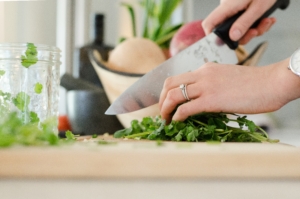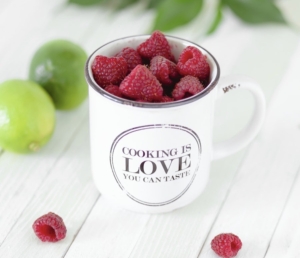Guide to the AutoImmune Paleo Diet (AIP)
What is Autoimmune Disease?
In the simplest terms, an autoimmune disease is when your immune system attacks your own body. There are 140 different ways this can happen with different labels; some common ones are autoimmune Thyroid, Multiple Sclerosis, and Rheumatoid Arthritis.
What is the AutoImmune Paleo Diet?
There are no real treatments to cure autoimmune diseases, and most of the medications help to decrease the symptoms instead of making them go away completely. One of the most powerful things we can do for autoimmune disease is to change our lifestyle: specifically our diet. The autoimmune diet is about eating foods that decrease inflammation and irritation, and allow the immune system to stay calm, so your autoimmune disease doesn’t flare up.
Foods To Eat
Think Ancestral foods!
These foods have all kinds of macronutrients, micronutrients, and vitamins and minerals. The next layer of nutrition that these foods are high in is called “phytonutrients” which are chemicals the plants make to function. These are just recently being discovered by Science, and we are slowly learning more about their incredible uses.

These visuals are from https://www.thepaleomom.com which has excellent resources for AIP.
Foods To Avoid
The number one food to avoid if you have an autoimmune disease is… you guessed it… Gluten. That includes wheat, rye, barley, and oats. For people who are intolerant, the protein molecule gluten can wreak havoc on your gut, and you can develop the leaky gut syndrome.
Nightshades are another food group we label as healthy, but they can cause some people problems. This group includes tomatoes, potatoes, eggplants, goji berries, tobacco, and peppers (bell peppers, chili peppers, paprika, tamales, tomatillos, pimentos, cayenne, etc.) These foods have a chemical in them that for some people can cause intense inflammation in the gut.
Some of the foods on this list like legumes and gluten-free grains have something in them called “lectins” which act like velcro. This chemical has a little hook in it, and if your gut is healthy it’s just like velcro going across your skin, and it doesn’t bother anything. But if your gut is torn up, these lectins will catch onto the wall and tear it even more.

Finding Satiation with AIP
We find satiation when our brain and nervous system sense that we have all the nutrients we need. Healthy fats help to fuel our brain which sends messages to our body telling us that we are full.
When you first start the Autoimmune Paleo diet, you will probably eat a lot! That is because your body is not getting its classical satisfiers. After a period of a couple of days to a week or so, your body will start getting all the nutrients it needs. Then your appetite will decrease, because you are fueling your body correctly instead of filling it with empty calories, and you will feel satiated.
Don’t Let Cravings Get You Down
At the beginning of the diet, you may go through physical and psychological cravings. Physical cravings are anything from sugar to fried foods and anything in between. We crave these sugary, salty foods because bad bacteria in our gut need them to survive. Psychological cravings come from the habits that you have created around food and any emotional reasons you are eating like for comfort. Once you meet your bodies needs and replenish good gut bacteria, the cravings will subside, and you will not have to use willpower anymore.
AIP is Not Just a Diet it is a Lifestyle Change
With Autoimmune Paleo, we start off eliminating all of the inflammatory foods and eating a very clean diet for about two weeks. Then we start bringing back in foods slowly like nightshades and seeing which foods upset you and which ones your body can tolerate. The goal is to never go back to eating the Standard American Diet because that is not real food.

You Won’t Stay This Strict Forever!
A common misconception is that once you start the Autoimmune Paleo diet you have to eat this way forever. That is false! You will absolutely be able to enjoy other foods again. One way of doing AIP is by eating this way for 9 months, and then re-introducing foods one at a time for 2 weeks. The AIP protocol can be done this way, but it is a lot harder and more intimidating. When I work with patients I recommend they go AIP strictly for 2-3 weeks maximum. Once that healing period is over patients bring in different foods, so I can test to see if the body reacts negatively to certain ones. The re-introduction of food can be more difficult if you try it by yourself because sometimes it is hard to determine if you had a food-related reaction, or an environmental, stress-related reaction. I use techniques in office that can distinguish if your body is rejecting certain foods, or if you feel crappy for other reasons. However, it is important to remember that our goal is to eat real whole foods and not go back to eating unhealthy processed foods.
Easy, Medium or Hard to Adopt?
The AIP diet ranges from being super easy to extremely difficult for some people to adopt. Let’s talk about why this diet can be easy or hard for people. Change is hard no matter what. It doesn’t matter if you are an experienced chef or can only use a microwave, any change will bring out emotional components that you will have to overcome.

AIP will be EASY to adopt if you…
- Love cooking at home
- Trying new recipes is fun for you
- Are willing to try some replacements for your favorite foods
- Enjoy pre-pairing meals ahead of time
AIP will be MEDIUM to adopt if you…
- Don’t know how to cook but you’re willing to learn
- Are eager to try foods until you find the ones that you like
- Rely on resources for help
AIP will be HARD to adopt if you…
- Hate cooking
- Eat out a lot
- Are not willing to give up foods
- Rely on other people to make your food
- Are not willing to learn
If you are eager to learn more about the Autoimmune Paleo Diet below are some great resources. If you found this post helpful in any way please share on Pinterest, Facebook, and email!
Resources:
https://www.thepaleomom.com https://www.thepaleomom.com/books/the… https://www.amymyersmd.com/2018/04/ea… https://www.huffingtonpost.com/dr-mar… https://www.bewell.com/blog/paleo-pit…
https://autoimmunewellness.com
SaveSave



